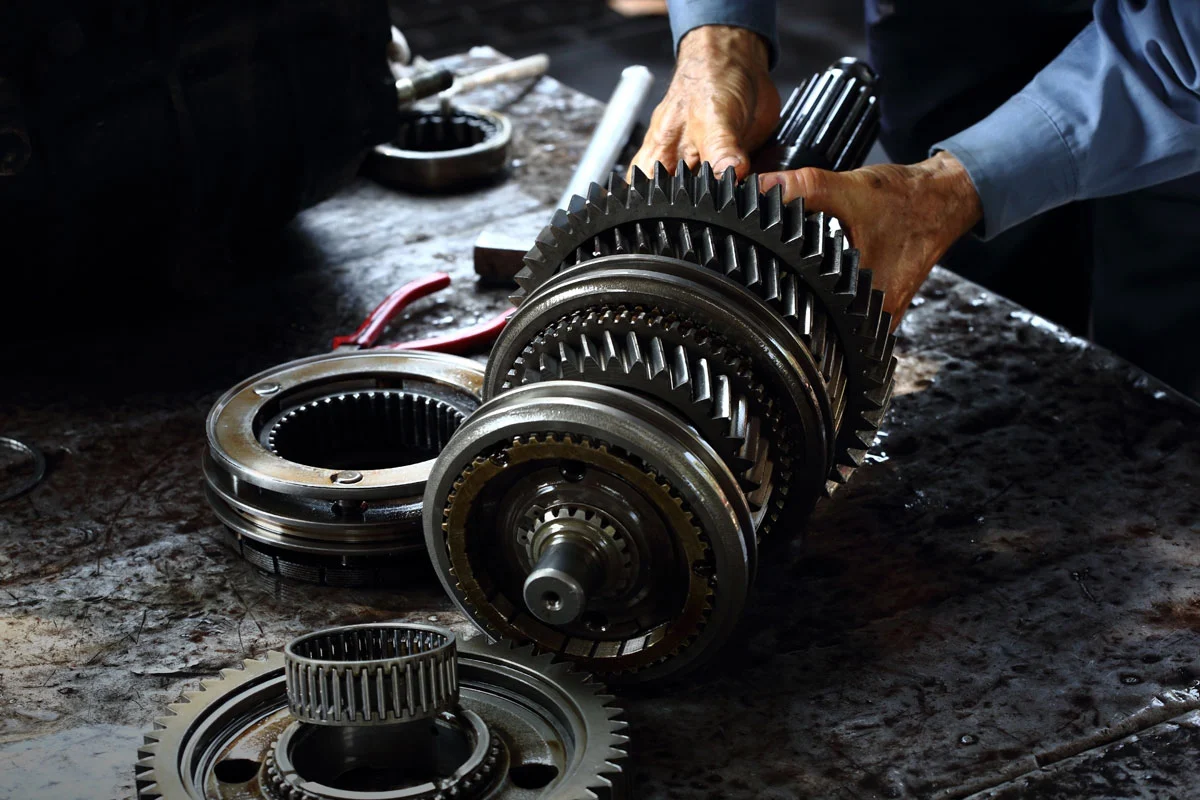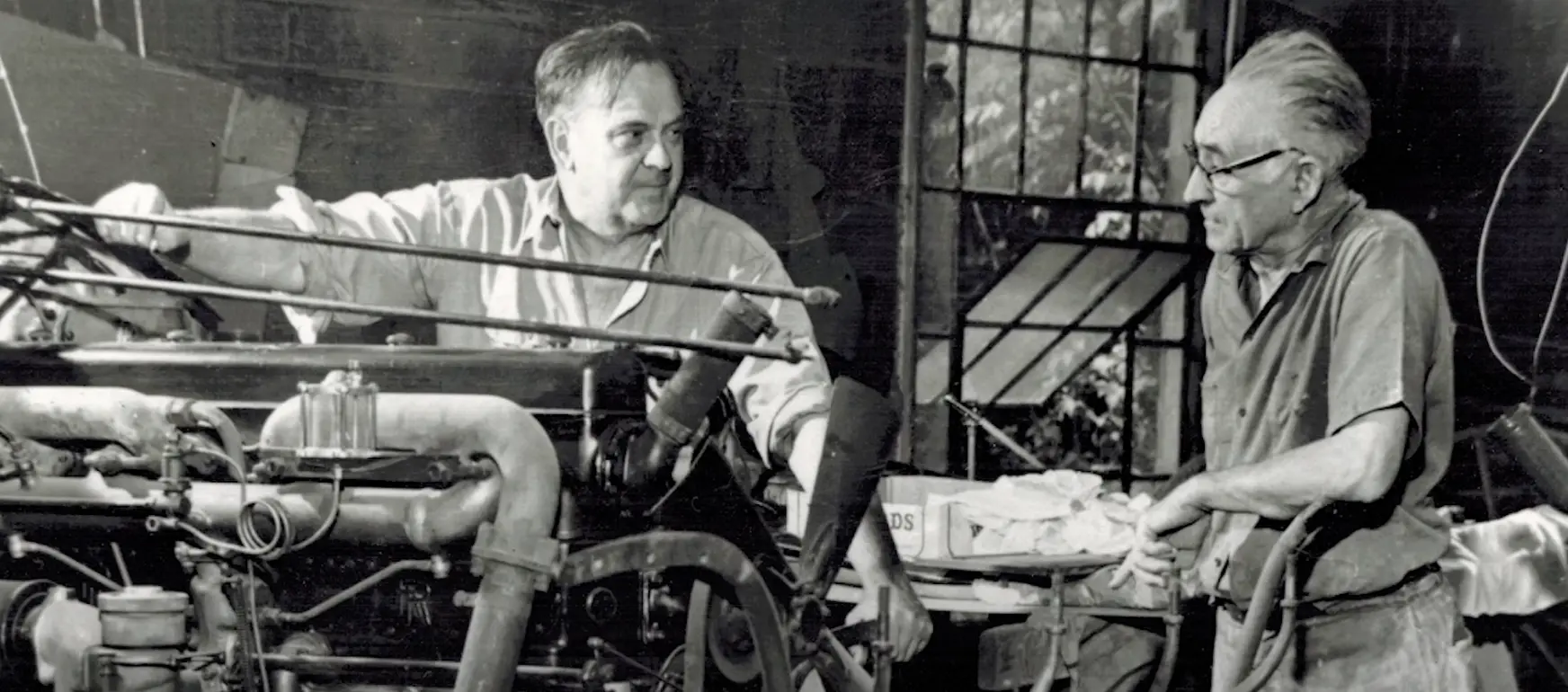About JC Whitney Editorial Team

Meet the JC Whitney Editorial Team, your go-to experts for automotive insights, from in-depth car culture articles to the latest in vehicle tech.
More from JC Whitney Editorial TeamThe history of the modern car transmission is a fascinating journey of innovation and engineering, evolving significantly from its early beginnings to the advanced systems we see today. In the early days of the automobile, transmissions were rudimentary, with the first cars having no gears at all—vehicles like the Ford Model T introduced simple transmissions that offered a basic means of controlling speed and torque. These early transmissions were manual, requiring the driver to physically shift gears using a lever. They typically had very few gears, often just two or three, and the process of changing gears was not as smooth or easy as it is today. In fact, years of innovation and industry changes were necessary to get transmissions where they are today.
Manual Becomes Standard
As automobiles became more widespread and technology advanced, there was a push to make driving easier and more accessible. This led to the development of the synchronized manual transmission in the 1920s, which made gear shifting smoother and less prone to grinding. This innovation was a significant step forward, allowing for more comfortable driving and better vehicle performance.
Earlier cars had no gears due to the simplicity and limitations of their engines and the nascent state of automotive technology at the time. These first vehicles were powered by basic internal combustion engines or even steam engines, which were not capable of providing a wide range of speeds or efficient power delivery across different driving conditions. The absence of gears was also a reflection of the rudimentary understanding of automotive mechanics and the primary goal of just achieving motorized motion, rather than optimizing for speed, efficiency, or drivability.
As automotive engineering advanced, the need for gears became apparent for several reasons. Firstly, gears enabled vehicles to better utilize the power and torque characteristics of the engine, allowing for more efficient operation at varying speeds and conditions. This was crucial for improving performance, as a single gear ratio limits the engine’s ability to provide sufficient power at low speeds while maintaining efficiency at high speeds.
Adding gears also allowed cars to handle a wider range of driving scenarios, from climbing hills to accelerating on flat surfaces, by providing the driver with the ability to select the appropriate gear ratio for the task. This versatility was essential for making cars more practical and appealing to a broader audience.
As roads improved and cars became capable of higher speeds, the need for gears to manage these speeds and maintain control over the vehicle became increasingly important. Gears offered the ability to achieve higher speeds without overrevving the engine, thereby extending the engine’s lifespan and improving fuel efficiency.
The development and refinement of transmission systems, including both manual and automatic types, have been driven by ongoing demands for greater efficiency, performance, and driver convenience. Innovations such as synchronized gears, hydraulic automatic transmissions, and continuously variable transmissions (CVTs) were responses to these demands, each improving on the limitations of previous systems.
Gears were added and evolved in automotive design as a natural progression towards improving vehicle performance, efficiency, and versatility. The evolution from gearless vehicles to those with complex multi-gear transmissions reflects the continuous advancement in automotive technology and the changing needs and expectations of drivers and society.
The Age of Automatic
The next major milestone in transmission technology came with the introduction of the automatic transmission in the 1930s, with General Motors releasing the first mass-produced automatic transmission, the “Hydra-Matic,” in the 1940 model year. This was a game-changer, as it removed the need for the driver to manually shift gears, making driving much simpler and opening up the automobile market to a wider segment of the population. Automatic transmissions evolved over the decades, becoming more efficient and reliable, with improvements in hydraulic systems, the introduction of torque converters, and eventually the development of electronic control systems that could optimize gear shifts for performance and fuel efficiency.
The earliest automatic transmissions marked a significant departure from manual gear shifting, offering a more user-friendly driving experience. These initial systems relied on a combination of hydraulic and mechanical technologies to automate the gear shifting process, reducing the driver’s workload. The fundamental principle behind the first automatic transmissions was to use hydraulic fluid pressure to select gears based on the vehicle’s speed and engine load, eliminating the need for the driver to manually operate a clutch or gear lever.
The development of the earliest automatic transmissions can be traced back to the 1920s and 1930s, with General Motors’ introduction of the “Hydra-Matic” transmission in 1940 being a landmark event. This system used a fluid coupling instead of a traditional mechanical clutch, which allowed the car to come to a stop in gear without stalling the engine. Gears were selected through a combination of hydraulic pressure and mechanical controls, which were regulated by the car’s speed and throttle position. The Hydra-Matic, initially offered in Oldsmobile cars, provided four forward speeds and reverse, significantly simplifying the driving process compared to manual transmissions.
Automatic transmissions underwent extensive development and refinement. The original designs were continuously improved to enhance performance, reliability, and efficiency. Innovations included the introduction of torque converters, which replaced fluid couplings to provide better torque multiplication and smoother acceleration from a standstill. This was a crucial improvement that helped automatic transmissions become more efficient and responsive.
Another significant advancement was the shift from purely hydraulic control systems to electronically controlled transmissions in the 1980s and 1990s. Electronic control units (ECUs) began to manage the operation of the transmission, using sensors to monitor vehicle speed, engine load, and other parameters to make precise gear selections. This electronic intervention allowed for more sophisticated control strategies, including the ability to adapt shifting patterns to the driver’s style and the driving conditions, further improving fuel efficiency and performance.
The Modern Era
Manufacturers also began to increase the number of gears in automatic transmissions, moving from three or four speeds to six, eight, or even ten speeds in modern designs. More gears allowed for a broader range of ratios, providing better acceleration, smoother cruising at highway speeds, and reduced fuel consumption.
Automatic transmissions have become more compact, efficient, and sophisticated, incorporating advanced technologies like dual-clutch transmissions (DCTs) and continuously variable transmissions (CVTs) to meet the diverse needs of vehicles and drivers. These developments reflect ongoing efforts to combine convenience and ease of use with the demands for higher performance and environmental sustainability in automotive design.
In parallel to the development of automatic transmissions, semi-automatic and continuously variable transmissions (CVTs) emerged. Semi-automatic transmissions blend manual and automatic features, allowing the driver to control gear shifts without a clutch pedal. CVTs, on the other hand, offer a ‘stepless’ gear ratio, providing seamless acceleration without the noticeable gear changes found in traditional transmissions. This technology, which became popular in the late 20th and early 21st centuries, has been praised for its efficiency and smoothness, particularly in hybrid and fuel-efficient vehicles.
The latest in transmission technology focuses on enhancing efficiency, reducing emissions, and improving the driving experience. Dual-clutch transmissions (DCTs), which use two separate clutches for odd and even gear sets, offer the efficiency and control of a manual transmission with the ease of an automatic. This technology provides quick, smooth shifts and has been adopted in both high-performance sports cars and everyday passenger vehicles.
Electrification of vehicles has also impacted transmission technology. Electric vehicles (EVs), for instance, often use single-speed transmissions due to the nature of electric motors, which can provide a wide range of speeds and torque from a standstill. This simplifies the transmission system and eliminates the need for multiple gears, showcasing how advancements in vehicle powertrains influence transmission design.
Throughout its history, the development of the car transmission has been driven by a desire to make driving more accessible, efficient, and enjoyable. From the manual systems of the early 20th century to the sophisticated automatic, CVT, and DCT systems of today, each innovation has built on the last, leading to the diverse array of technologies we see in modern vehicles. As we look to the future, the ongoing shift towards electrification and automation promises to bring further changes to transmission technology, potentially redefining our understanding of what a transmission can be.



